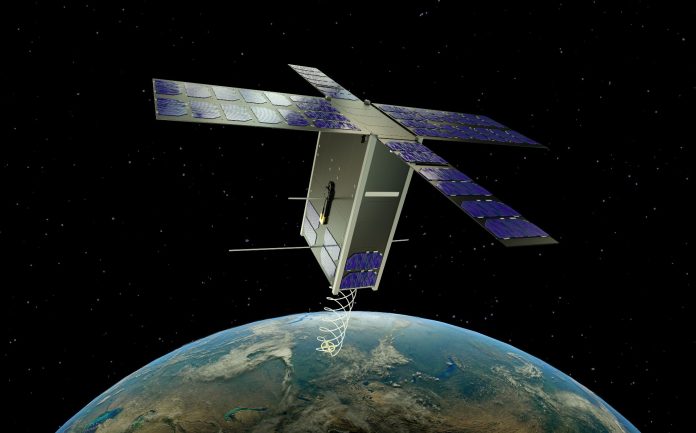Busy Dutch industrial IoT scale-up Hiber has announced it will use Inmarsat’s new ELERA satellite IoT network to expand its own low-power wide-area (LPWA) IoT network, which goes under the name Hiberband. The deal allows Hiber, founded in 2016, to “gain years in satellite connectivity development”, it said, and “cements” UK-based Inmarsat as a bedrock tech provider for “digital-native companies with ambitious business plans”.
Inmarsat claims the “world’s most diverse portfolio” of mobile telecoms satellite networks, and a global spectrum portfolio at 1525-1646.5 covering the L-band, Ka-band and S-band. Its new ELERA satellite system, providing narrowband IoT connectivity in the L-band, was announced in August, to go live with aviation customers from 2022. It is being pitched as a “springboard for innovation… on land, at sea and in the air”.
Hiber, with offices in Amsterdam and Delft in the Netherlands, as well as Maryland in the US, makes IoT solutions for remote industry, combining sensors, analytics, and satellite connectivity. Hiber said it will continue using its own proprietary protocols, for low power and data consumption, to connect to Inmarsat’s ELERA network. The new partnership will enable Hiber to support a range of new industrial IoT applications, it said.
Its fledgling Hiberband network was developed initially under its own steam, including via a €26 million investment from the European Union in March, in combination with the Dutch government, as a part of its €278 million European Innovation Council (EIC) Fund. The new funds are earmarked to expand its satellite network and grow its customer base.
Its HiberEasypulse system, launched in June, claims to offer cheap IoT connectivity for tracking and monitoring in remote locations. Its HiberHeavy solution, released in March, is geared for monitoring heavy equipment, also in remote locations, where mobile coverage fails. Both are targeted at the oil and gas, forestry, mining, and military sectors, among others.
Royal Dutch Shell announced in September it is using the HiberHilo solution to monitor the condition of offshore oil wells. The solution has been installed at Shell operations in the North Sea, and is being considered in Southeast Asia, the Middle East, and Africa. Shell will look to reduce travel to and from wells in remote locations, and gain new data about their performance. Royal Dutch Shell expects all Shell entities and subsidiaries to use the product.
Hiber has a joint venture around the HiberHilo product with solution provider WTS Energy, which sells digital change solutions to the oil and gas sector; WTS Energy claims 1,250 consultants in 18 countries. Hiber appointed Roel Jansen as chief executive in August; Jansen was previously vice president of sales at SurveyMonkey (Momentive) and a co-founder of customer feedback company Usabilla, which SurveyMonkey acquired in 2019.
Roel Jansen, chief executive at Hiber, said: “IoT is changing everything. We are witnessing the kind of transformation not seen since the industrial revolution. This strategic partnership with Inmarsat creates the most powerful global network for IoT available and helps Hiber to focus on rural, remote, and industrial IoT solutions, which is where the real life-changing innovation will happen.
“Inmarsat’s L-band IoT network allows us to serve more customers in more remote locations by supporting use cases that were impossible prior to this partnership. We also gain immediate worldwide market access with less regulatory risk, which means we can focus on delivering our customers superior IoT products and services that are easy to buy, easy to install, and easy to use.”
He added: “Partnering with Hiber helps cement Inmarsat’s position as a provider of advanced satellite connectivity to digital-native companies with ambitious business plans.”
Mike Carter, president for Inmarsat’s enterprise division, said: We are delighted to work with Hiber to provide the IoT connectivity backbone that will support and accelerate their development of proven industrial IoT solutions and services worldwide. Together, we will extend the efficiency, sustainability and productivity benefits that IoT can offer to businesses in those areas where terrestrial or cellular connectivity is either unreliable or non-existent.”
This week, analyst firm Berg Insight said the number of satellite IoT subscribers will increase at a compound rate of 35.8 percent per year to reach 15.7 million in 2025, from around 3.4 million in 2020. The market for satellite IoT communications is growing at a “good, steady pace”, it said, even despite the impact of the Covid-19 pandemic on demand-side business priorities and supply-side manufacturing and logistics in the broader IoT sector.

